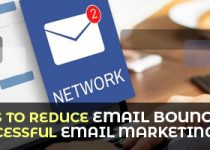10Nov 22 How Content Marketing Can Boost A Business Growth
Content is the actual meat when it comes to online or digital marketing.
You’ve probably heard that “content is king,” but it’s not always evident how producing and disseminating helpful information advances your company’s operations and revenue generation. Blogs, videos, infographics, live streaming, podcasts, etc., are different forms of content.
Simple math explains how this has business implications. Increased site traffic translates into a larger pool of possibilities; over time, a larger pool of opportunities should provide more income and profit.
Content marketing (e.g., social media, email marketing, paid search, referral). has become the most popular market medium in recent years for its effectiveness.
Nowadays, any digital marketer aims to get Google ranks to promote sustainable customer growth and company expansion.
It requires a lot of effort to earn your rankings, and here is a content marketing strategy that will earn you more traffic and revenue…
Produce Content In Line With Your Brand
It may be highly tempting to produce every material pertinent to your specialty or market. But at that point, it becomes challenging for your audience to distinguish you from the competitors and remember your brand.
So ensure that every essential component of your brand story is maintained in your material.
Create material on subjects that appeal to your target audience and address their problems or requirements.
Maintain your brand’s personality, feel, and look in all of your communications.
Keep your communication style consistent with your brand’s voice.
Create Content Regarding Your Target Audience’s Search Intent
You might have put a lot of effort into writing content based on careful keyword research. or are ready to begin from scratch with your SEO. However, do your contents address the wants or concerns of your audience? If not, you cannot get the actual benefits of content marketing strategy.
Why your audience is genuinely looking for something should take priority. Is it to find answers, to buy, or to decide? We refer to this as search intent.
To construct your content marketing plan, dig deep into a specific term. Recognize the viewer’s search intent and the customer journey stage and help them go from awareness to conversion.
There are four distinct types of search intent you can work with:
1) Informational: In situations where people are purely seeking information. The audience here may not be in the market to make a purchase at this point in the consumer journey. They might require help with a situation they are experiencing. For instance, “leather shoe cleaning.”
Informational content is great for movies, infographics, blogs, etc. You shouldn’t try to sell any goods or services in this type of content.
2) Navigational: When a person is trying to find a specific brand’s website. For instance, when people look up “Adidas.
Companies with strong brand recognition can use a navigational content marketing strategy. You can therefore produce branded content.
3) Commercial: When consumers consider purchasing or contrasting two products. For instance, “Nike vs. Adidas training shoes. The user is, therefore, interested in making a purchase but simply needs a little more information before deciding.
This type of content marketing is for brands, services, or products that focus on specifics rather than broad knowledge. You can include internal links to your product pages in this content.
4) Transactional: When they wish to purchase a particular product or service. These keywords would include words like “purchase,” “sale,” “discount,” etc.
Transactional content with these keywords is commonly used for sales and landing pages.
Share Your Article On Social Media Several Times
In addition to the more general advantages of social media marketing, such as increased brand recognition, 54% of social browsers use social media for product research.
While the frequency of your social media posts will vary depending on the platform, you should set up a social media schedule to share both your most recent and older, remarkably successful material to increase site traffic.
Side Note: YouTube is the lone exception, where you shouldn’t submit identical content multiple times as it’s more of a search engine than a social media platform.
Measured Outcomes
Without precise metrics, no marketing approach could be deemed successful.
These duties frequently get neglected if you don’t have enough staff to handle your content, promotional channels, and analytics. We’ll explain the key metrics to watch for to measure the importance of your current content marketing strategy.
Google Analytics
Consider Google Analytics if you use only one data source to assess the success and failure of your campaigns.
- Pageviews – Pageviews are a way to gauge how many people are viewing your material.
- Average Time on Page – the length visitors spend on your page (the longer, the better!).
- Bounce Rate – Bounce Rate is the proportion of site visitors who land on your content but never visit any other sites (bounce rate should be as low as possible).
- Exit Rate – The percentage of users who left your content page alone (exit rate) is what you want to be as low as possible.
Social Media Analytics
The following are the primary metrics from websites like Facebook, Twitter, and LinkedIn that you should aim to monitor:
- Impressions – How many times your post or advertisement was seen (whether engaged with or not)
- Clicks – The number of clicks your post or advertisement received
- Comments – How many comments have your post or advertisement received? Staying active here can help you increase your total engagement.
- Landing Page Views (paid posts only) – The number of times people clicked the ad link to your article.
- Cost Per View of a Landing Page (paid posts only) – The price you pay each time a user clicks on your content.
Email Marketing Analytics
The following metrics are the primary ones to monitor:
- Open Rate – Open Rate is the percentage of times users have opened your emails.
- Click-Through Rate – When contrasted with the number of emails opened, the click-through rate measures the proportion of readers who clicked on your links (such as a link to a content page).
- Unsubscribe Rate – The proportion of subscribers that unsubscribed from your email list as a result of receiving the email
In Conclusion,
It all boils down to increasing conversion by gaining more audience. Your audience will grow as more people go to your material for direction and aid due to your high-quality content creation. They might feel at ease subscribing to your newsletter or adding you as a social media follower. It’s okay if they just do one but not the other.
People will want to read your content if it is consistently interesting and new. Make sure the content is simple, interesting, friendly, consistent with your brand, written in your voice, and suited for your target audience to get the benefits of content marketing strategy.
You’ll be on your way to having your content aid in the expansion of your business by taking the time to create high-quality content that provides your customers with the answers they need and encourages their trust.


